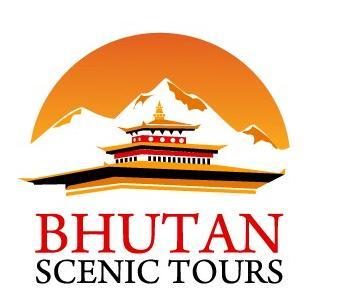Bhutan Birding Tour | Birdwatching in Bhutan
BIRD WATCHING | BIRD PHOTOGRAPHY | BIRDING TOUR
With the largest area under forest cover and protected sanctuaries for its size and lauded with prestigious environmental conservation awards. Bhutan has a wealth of flora, fauna and avi fauna unrivalled in the Himalayas and has aptly been named a Hotspot for ecological biodiversity.
Over the years, Bhutan is increasingly being described as the birding capital of the world owing to the diverse species ranging from ducks, waders, birds of prey, thrushes, finches, trogon, warblers, sunbirds, honey guides, monal pheasant and buntings. Bhutan is currently home to 770 birds and more than 50 species of migratory birds. The country harbors more than 16 species of vulnerable birds that are in danger of extinction, including the white bellied heron, which is one of the fifty rarest birds in the world and the majestic Black-Necked crane, which breeds in Tibet and then migrates over the Himalayas to roost in Bhutan during the winter months.
The different variations of altitude, climatic zones, vegetation and topography within a small land mass like ours offers ample opportunities to see and admire ( and photograph) a wide range of species. Every year new species continues to be spotted to our delight. We have the requisite experience and expertise to take you to close to the many different kinds of birds and also help you fill up your check list. We offer trips of any duration and programs can be customized to suit your time in our part of the Himalayas. Please find below a sketch of a birding adventure with us.
Tour Outline
Day 1. Arrival at Paro (Overnight at Paro)
Day 2. Paro to Punakha (Overnight at Punakha)
Day 3. Birding in Punakha (Overnight at Punakha)
Day 4. Punakha to Phobjikha (Overnight at Phobjikha)
Day 5. Briding at Pelela pass (Overnight at Phobjikha or Nobding)
Day 6. Birding at Nobding (Overnight at Nobding)
Day 7. Nobding to Paro (Overnight at Paro)
Day 8. Birding at Chelela Pass (Overnight at Paro)
Day 9. Depart for home
ITINERARY
Day 1. Arrival at Paro
Arrive at Paro international airport and transfer to the hotel for a moment of rest and recuperation. Towards the late afternoon look for target water birds like Ibisbill, Black-tailed Crake, Solitary Snipe and Brown Dipper. There is also a likelihood of seeing ducks and other shorebirds along the river.
Paro Altitude : 2250m
Day 2. Paro to Punakha ( 3.5 Hours drive)
Enroute to the sub tropical Punakha valley we will come across Dochula pass where we will scan for Fire-tailed Myzornis, Brown Parrotbill, Grosbeaks, Laughingthrushes (Spotted, Black-faced and Chestnut-crowned), White-browed Shortwing, Spotted Nutcracker, Bullfinches (Red-headed, Brown), Tits ( Black-throated , Coal, Rufous-vented, Gray-crested), and Warblers.
Punakha Altitude : 1200m
Day 3. Punakha
Early morning, we drive onwards to the foothills of Gasa, the vegetation here consists of broad-leafed forests making it among the favored places to scan for species such as the Red-headed Trogon, Leafbirds (Orange-bellied, Golden-fronted), Asian Barred Owlet, White-browed Bush Robin, Niltava (Small, Large and Rufous-bellied), Tesias (Gray-bellied, Chestnut-headed), Barbets( Great, Yellow-throated, Blue-throated), Sunbirds (Black-throated, Green-tailed), Wren Babblers( Scally-breasted, Pygmy), Spotted Elachura, Hill Partridge and various Cuckoos.
Punakha Altitude : 1200m
Day 4. Punakha to Pelela to Gangtey/Phobjikha ( 4 hours drive)
We make an early start as we set on the drive towards Pelela pass. Today we will be looking for a variety of beautiful feathered friends such as the Fire-capped Tit, Yellow-rumped Honeyguide, Himalayan Cutia, Black-headed Shrike-babbler, White-browed Shrike-babbler, Fire-tailed Myzornis and others. Upon arrival in Phobjikha valley we will be spotting for the highly endangered black necked cranes which is the most important bird embedded in the local folklore of this beautiful valley.
Gangtey/Phobjikha Altitude : 3000m
Day 5. Birding at Pelela Pass / Gangtey/Phobjikha ( 1 hour drive)
The pelela pass (3300m) is famous for Pheasants like Satyr Tragopan, Himalayan Monal and Blood Pheasant. We will also look for Fire-tailed Myzornis, Great Parrotbill, Griffon Vulture, Bearded Vulture, Buzzards (Common, Upland), Sivas (Bar-throated, Blue-winged), Yuhinas (Stripe-throated, Rufous-vented, and White-naped, whiskered) and Rosefinches.
Gangtey/Phobjikha Altitude : 3000m
Day 6.Birding at Nobding
Wards Trogon is the specialty in this area. We will be driving to the Trogon site and look out for this species. Additionally, we will look for Thrushes (Tickell’s , Eye-browed, Black-throated, & Black-throated), Black-eared Shrike-Babbler and Barred Cuckoo-Dove, Ferruginous Flycatcher, Little Pied Flycatcher and Forktail (Little, Spotted).
Nodding Altitude : 2700m
Day 7. Pelela/Nobding to Paro ( 5 hours )
We retrace the route to Paro from Pelela pass and along the the way we will look for Redstarts, Prinias (Striated, Black-throated), Bhutan Laughingthrush, Scimitar Babblers( Streak-breasted, Rusty-cheeked), Speckled Wood Pigeon, Mountain Hawk Eagle, Minivets (Scarlet, Long-tailed, Grey-chinned).
Paro Altitude : 2250m
Day 8. Paro to Chelela pass to Paro ( 3 hours )
We set out on a nature drive to Chelela pass (3900m) early in the morning and look for Pheasants, Accipiters , Collared Grosbeak, Himalayan Bluetail, Bush Robins, Red-billed Cough, Snow Pigeon, Accentors ( Alpine, Altai), Treecreepers (Hodgsons, Rusty-flaked).
Paro Altitude : 2250m
Day 9. Depart for home/onward destination
We check in two hours prior to flight departure to ensure the best seats on board, best suited to take in the panoramic view of the Himalayas.
We bid you goodbye and happy travels.







